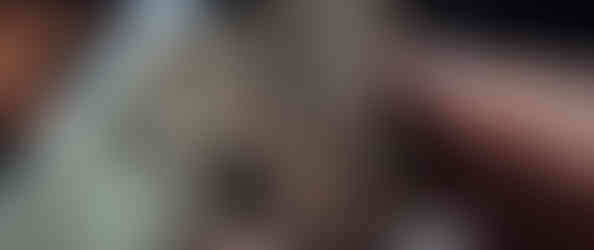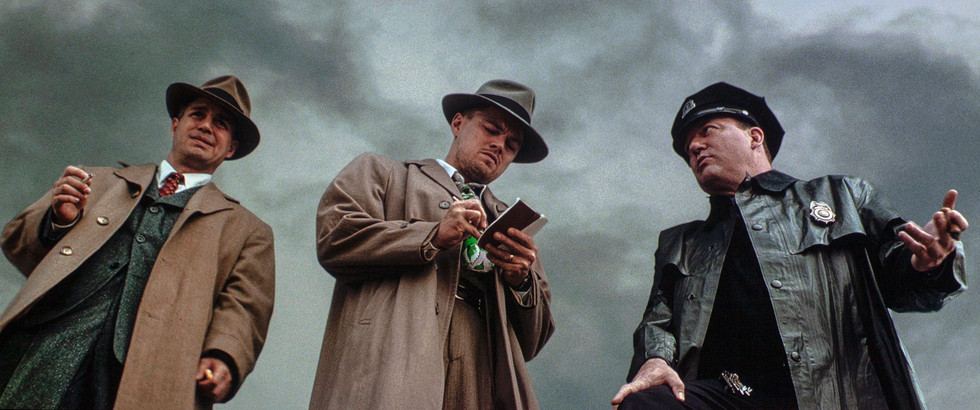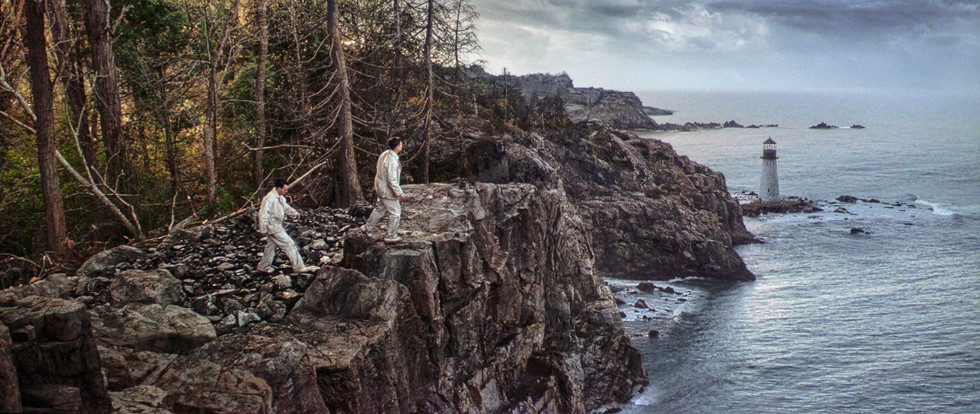Scorsese’s compelling “Shutter Island” doesn’t touch all the bases, but it comes close enough
- Craig Shapiro
- Feb 18, 2020
- 5 min read
Updated: Jun 5, 2022
4K ULTRA HD REVIEW / HDR FRAME SHOTS

U.S. Marshals Chuck Aule (Mark Ruffalo) and Teddy Daniels (Leonardo DiCaprio) arrive on Shutter Island to investigate the disappearance of a patient from the hospital for the criminally insane.
(Click an image to scroll the larger versions)
“SHUTTER ISLAND: 10th ANNIVERSARY EDITION”
4K Ultra HD and Blu-ray, 2010, R for disturbing, violent content, language and some nudity; Streaming via Amazon Prime Video, Apple (4K), FandangoNOW (4K), Google Play (4K), Vudu (4K), YouTube (4K)
Best extra: “Into the Lighthouse,” an interview with Dr. James Gilligan, the film’s psychiatric advisor, from the original Blu-ray
HAVE YOU noticed that too many directors wrap up their movies with a nice, neat bow so that everyone goes home satisfied, no questions asked? Martin Scorsese has done it, too. Can we agree that “Taxi Driver” ran 10 minutes too long? (And let’s not even get into Frank Darabont’s “The Shawshank Redemption.”)
So it’s refreshing that “Shutter Island,” Scorsese’s evocative psychological thriller, defies convention and leaves it to viewers to decide what motivated its protagonist at the end. Is his reason the ramblings of a madman or is he faking his relapse so he can escape his crushing guilt?
SPOILER ALERT: Key plot twists ahead.
That protagonist is U.S. marshal Teddy Daniels (Leonardo DiCaprio), or, as it turns out, Andrew Laeddis, who killed his wife (Michelle Williams, “Brokeback Mountain”) after she drowned their three children. Andrew blames himself—he drank too much, was never home and didn’t get Dolores the psychiatric help she desperately needed.
Andrew needed help, too—he was traumatized by what he saw, and did, during the liberation of the Dachau concentration camp at the end of World War II—but rather than reach out, he gave into his delusions and invented an alternative narrative.
(1) A foggy morning as the boat approaches the island from Boston. (2) Daniels fights motion sickness. (3) Once on the island, the marshals see different patients on the hospital grounds (4). Daniels is introduced to Dr. John Cawley (Ben Kingsley).
Which brings him to Shutter Island, a foreboding outpost off the Massachusetts coast and the site of an institution for the criminally insane. Teddy and his partner Chuck (Mark Ruffalo, “The Avengers”) are investigating the disappearance of a patient named Rachel (Emily Mortimer, “Lars and the Real Girl”), who killed her three children and now lives in a fantasy of her own creation. Teddy wanted the assignment because he’s convinced Laeddis is on the island.
See where this is going?
One thing leads to another—can’t give everything away—before Teddy faces up to reality (maybe). Suffice it to say that the final scene turns on a plot twist that you can see coming a mile away and that may not fly with everyone.
The bigger hurdle is that the movie gets bogged down by long sequences of awkward exposition (the now-you-hear them, now-you-don’t Bahston accents are just annoying). Screenwriter Laeta Kalogridis (“Alita: Battle Angel”) adapted the novel by Dennis Lehane (“Gone Baby Gone,” “Mystic River”), who says in the feature “Behind the Shutters” that he was thinking about John Frankenheimer’s “The Manchurian Candidate” (1962) and Don Siegel’s original “Invasion of the Body Snatchers” (1956) when he set his story in 1954, when the nation was in the grips of McCarthyism. One of the challenges he set for himself was whether he could write a book with “a completely unreliable narrator.”
No problem there. DiCaprio (“Once Upon a Time … in Hollywood,” “The Revenant”) is totally convincing, and the supporting cast, which includes Ben Kingsley (“Gandhi”) and Max von Sydow (“The Seventh Seal”) as two psychiatrists who run the institution, is uniformly excellent.
One more major plus: “Shutter Island” is right in Scorsese’s wheelhouse. It delivers “everything he loves about filmmaking—period, style and genre,” Ruffalo says in “Behind the Shutters.”
Is that enough for the film to surmount its hurdles? That’s for you to decide.
(1) Daniels is given pictures of the missing patient Rachel Solando (Emily Mortimer). (2) The search for Rachel continues with Deputy Warden McPherson ( John Carroll Lynch) overlooking a rocky cliff. (3) Daniels and Aule meet Dr. Jeremiah Naehring (Max von Sydow) in a section of the hospital built during the Civil War. (4-6) Daniels still suffers from horrific flashbacks from when his U.S. Army unit entered the Dachau concentration camp at the end of World War II.
EXTRAS
There are only two, “Behind the Shutters” and “Inside the Lighthouse,” both of which were picked up from the original Blu-ray release.
“Shutters” is pretty standard fare, with the cast singing each other’s and Scorsese’s praises, but Scorsese does talk about the unconventional approach that he and music supervisor Robbie Robertson (The Band) took to the score. Instead of writing specifically for the movie, they pulled movements from the works of Ingram Marshall, Max Richter, John Cage and other contemporary composers to create what Scorsese calls “a world of sound.” It works.
Far more interesting is “Into the Lighthouse,” an interview with noted psychiatrist James Gilligan, the film’s consultant and former treatment director at Massachusetts’ Bridgewater State Hospital for the criminally insane. He discusses the two schools of thought at the time of the movie’s setting—the more humanistic model represented by Kingsley and the “medieval” model, represented by Von Sydow, that stubbornly advocated for lobotomy and shock therapy.
Gilligan also offered the cast insight into what was going on in their character’s mind, adding that playing roles like these “takes an enormous amount of psychological reserve.”
VIDEO
Scorsese and Oscar-winning cinematography Robert Richarson ("The Aviator," "Hugo" and "JFK") filmed mostly on Paddock Island in Boston Harbor and the grounds of the Massachusetts Medfield State Hospital. The duo used traditional 35mm film cameras (2.39:1 aspect ratio), which still dominated the multiplex a decade ago, but strangely it was mastered in 2K. Film grain is evident from the Super 35 film format, but not at the level you would expect. Hints of possible noise reduction were applied since it lacks detail at times.
On the other hand, the HDR10 and Dolby Vision tuning have been nicely dialed with a slightly more desaturated and natural look compared to the older HD master for the present-day scenes. The flashback moments are still stylized with high contrast and intense color toning, while the highlights and shadows are more controlled and detailed from start to finish.
AUDIO
The 4K and Blu-ray are coded with the same six-channel DTS-HD soundtrack that's nicely balanced between effects, dialogue and its rich and varying music. The haunting bass and cello lead for Symphony No.3 - Passacaglia Allegro Moderato from Polish composer Krzysztof Penderecki is unnerving along with the avant-garde "Root of an Unfocus" for piano by composer John Cage, plus period tunes "Cry" from Johnnie Ray and "This Bitter Earth" from jazz and soul singer Dinah Washington.
Surprisingly "Shutter Island" has been Scorsese's second-biggest box-office hit just making under $300 million worldwide, with "The Wolf of Wall Street" (2013) topping the director's list at nearing $400 million.
- Craig Shapiro
(1) Daniels has visions of his wife Dolores (Michelle Williams) involving fire and water. (2) Blinding headaches continue to affect Daniels. (3) Ward C was a fort during the Civil War and now houses the most dangerous patients. (4) Daniels encounters killer Andrew Laeddis in Ward C.
(1) Daniels and Aule get a view of the Shutter Island lighthouse. (2) Daniels isn't sure Aule is his partner. (3) Dr. Cawley shows patient No. 67 his daughter that was killed by her mother. (4) Patient 67 is escorted to his next treatment.
TRAILER





































Comments